Just a quick note, everyone:
If you’re following this blog via WordPress, whether through the follow service or by email, I’d really appreciate it if you subscribed to my mailing list instead! Sometime in the next few years, I plan to self-host this website without the WordPress platform, and I’d really love to keep you all as an audience! You can join the mailing list by clicking here.
If you’re worried about getting duplicate content, just unsubscribe from WordPress’s services. Here’s some documentation on how to do that.
Thank you!
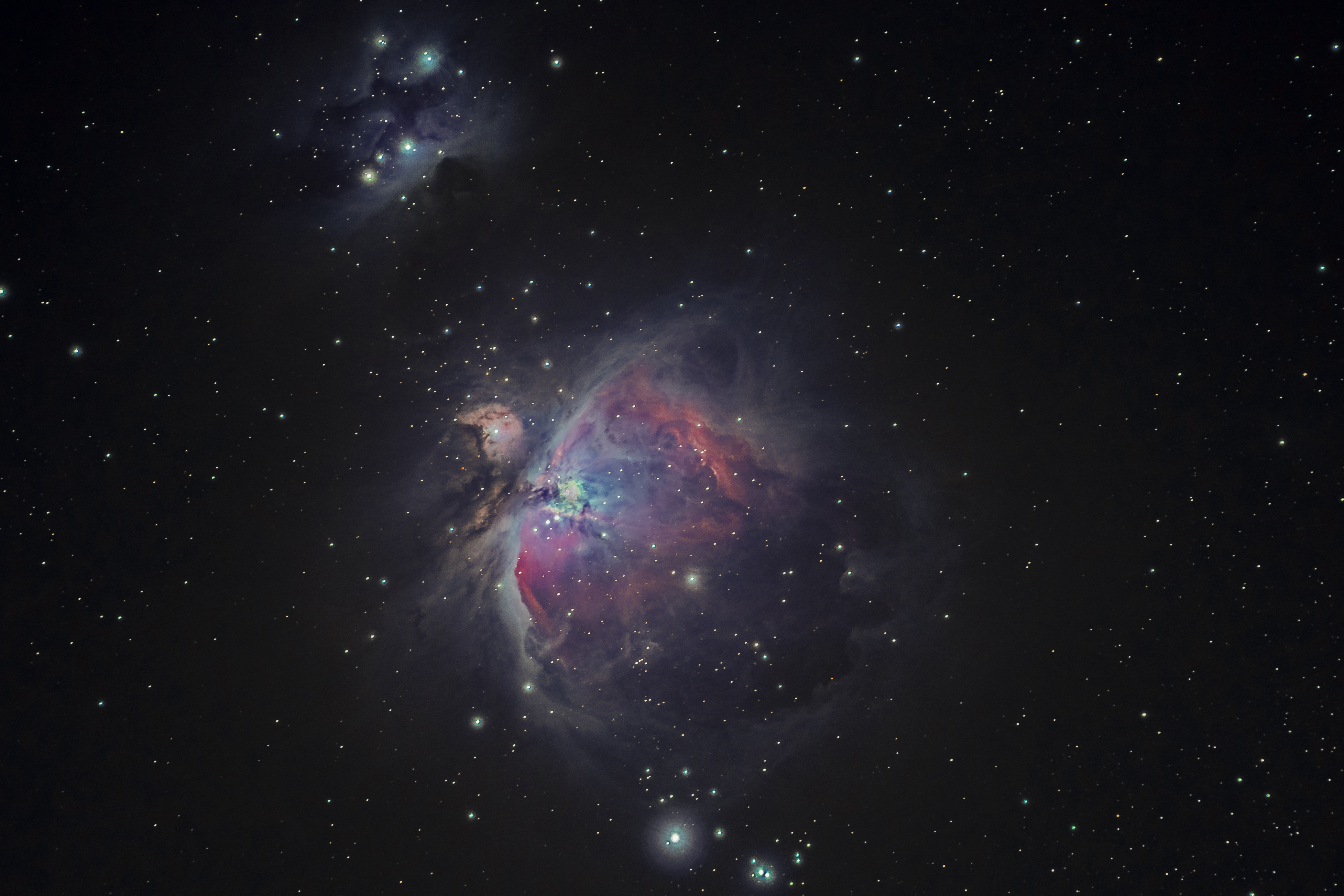
One of my favorite objects to show people at astronomy outreach events is the Orion Nebula. Not only does it reside within a fairly well-known constellation, but it’s a gorgeous sight to see with a good telescope.
There’s no time like the present up here in the northern hemisphere. Orion is a winter constellation and rises high in the sky this time of year. Not to mention, as a stellar nursery, talking about the Orion Nebula follows on perfectly from my last couple posts on star formation.
If you’ve ever seen the Orion Nebula through a small telescope, you’re probably wondering what all the rage is about. It mostly just looks like a bluish haze around a star—like the telescope operator didn’t tune the focus quite right.
But if that’s all you’ve seen, I promise you, you’re missing out…
Because Orion is such a crowd-friendly constellation, I think it’s only right I tell you a little bit about how to find this nebula yourself before I dive into its history of star formation.
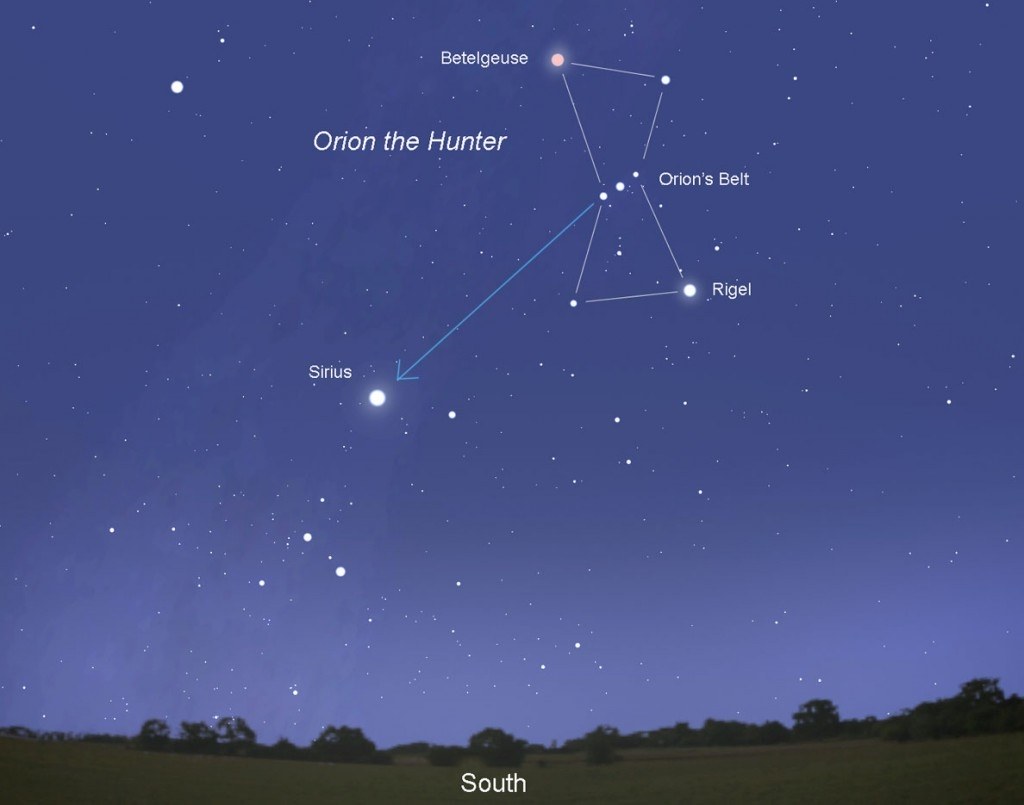
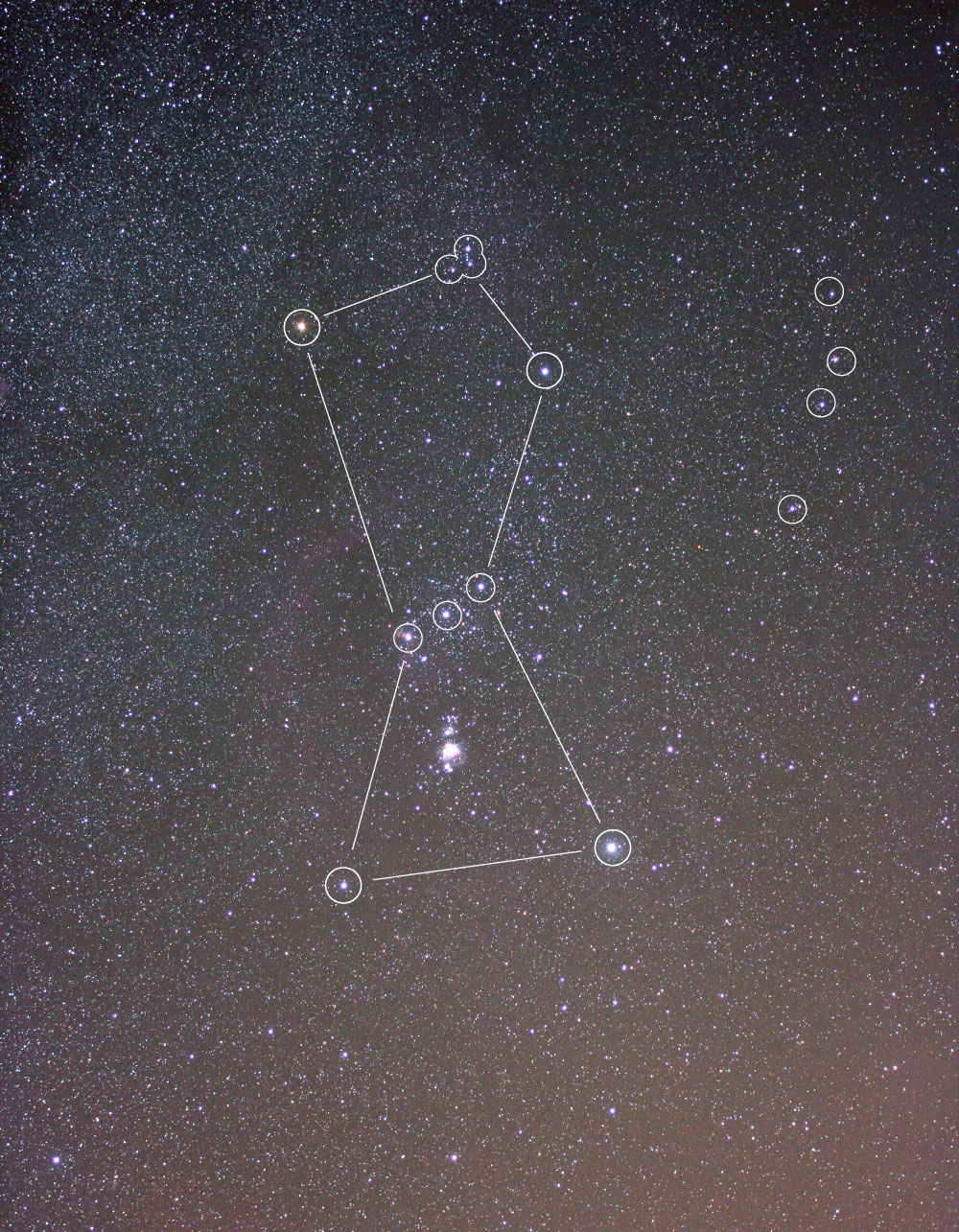
Orion is huge and easy to spot. It arches high in the sky to the south in the winter and rises fairly early on in the evening. In late summer, you would need to get up just before the crack of dawn to catch it—but not so in the winter.
The nebula itself is found south of “Orion’s Belt” in the little lineup of stars referred to as the “sword.”

Now, if you’ve seen the Orion Nebula through a small telescope and have no idea what’s so great about it, I don’t blame you.
I’ve been showing people the Orion Nebula for years—long before I got my large 11-inch Schmidt-Cassegrain telescope. And the sight they saw through my little 5-inch was…disheartening, to say the least. It doesn’t really do the nebula justice.
This is all you’re likely to see. And that’s on a good night with good seeing conditions and very little light pollution and…well, you get the picture.

If you look at the Orion Nebula through a larger telescope, however…
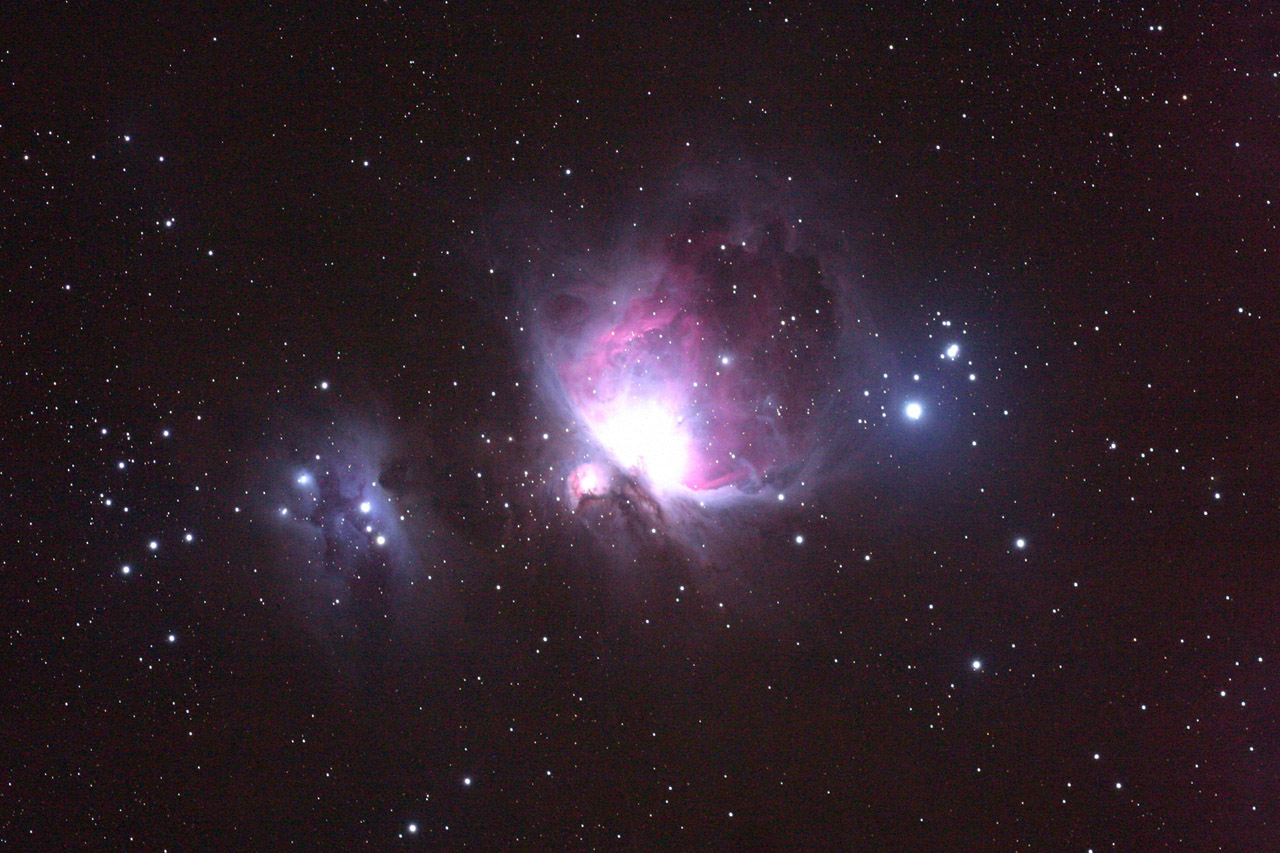
Whoa…much better.
Okay, so you’re only really going to see this sight through an eyepiece if you use a nebula filter. They look like a tiny magnifying glass and screw onto the back of your eyepiece, and they basically bring out color contrasts in sharper relief.
If you observe the Orion Nebula through a large telescope, chances are the color of that unimpressive bluish haze won’t change. But it’ll be more zoomed in, brighter, and likely more detailed. I promise you, it’ll be more impressive.
So what the heck’s going on inside this nebula, you ask?
First…let me dispel one common misconception. Although the Orion Nebula only refers to the visible part, it’s only a small region of a much vaster cloud of gas and dust that’s part of the interstellar medium, the stuff between the stars.
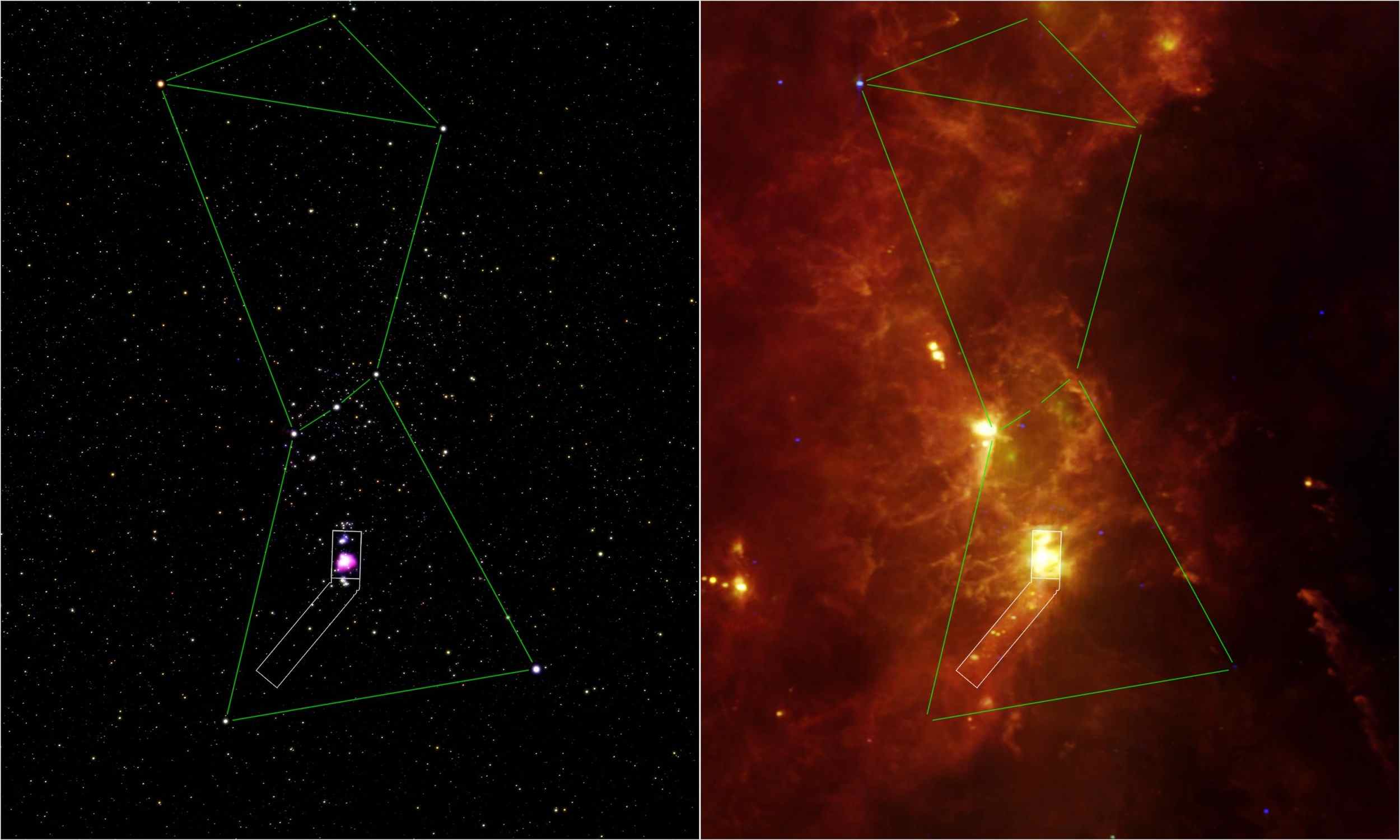
On the left is an image of your typical view of the night sky. On the right, however, is what you would see in Orion’s place if your eyes could observe in the infrared. All that reddish wispiness…that’s interstellar dust. And all of it could one day form stars.
In fact…some of it already has.
Take the Trapezium, for example. It’s trapezoidal cluster of newborn stars deep within the Orion Nebula.

The stars of the Trapezium are young—less than 2 million years old. I know that sounds like an extraordinarily long time, but consider that the Earth itself is estimated to be 4.6 billion years old. Our sun is just a little bit older. And red dwarfs can live so long that none have died since the universe’s formation about 14 billion years ago.
That makes the stars of the Trapezium practically babies, from an astronomical standpoint. And the nebula itself can’t be much older. In fact, it’s estimated to be about 3 million years old.
The Orion Nebula has not been idle, either, in the last 2 million years since the stars of the Trapezium formed. Here’s an image of the cluster taken in the near-infrared…
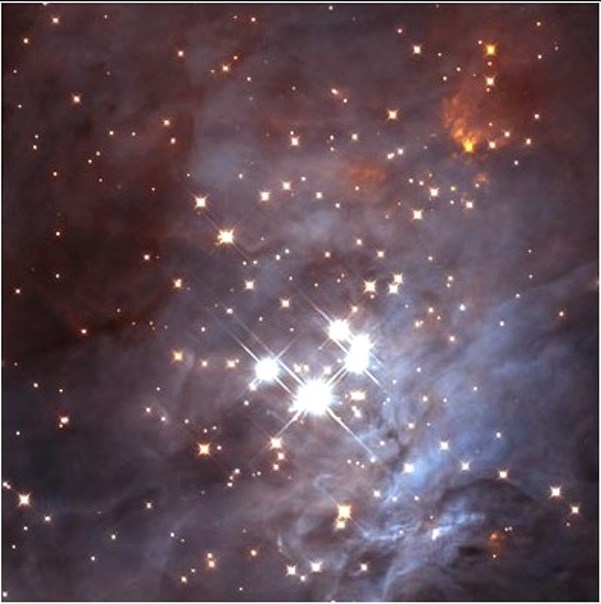
Whoa…where’d all those red stars come from?
These stars are actually protostars, many still cocooned within the dust they formed from and visible only in longer wavelengths that can pass through such an environment. Even if we could see such faint objects, we couldn’t see them with our own eyes—we simply can’t see in the infrared.
These protostars are evidence that the nebula is still hard at work. But why are there so many here, around the Trapezium?
The answer could be the radiation winds blowing outward from the Trapezium. Its stars are young and hot, and such winds would be strong. It’s like leaving a tornado to its own devices in the desert.
Just as wind can pick up and displace sand and even heavier objects, radiation can push the dust of the surrounding nebula away. Nearby regions can be compressed, triggering more star formation.
And that’s not even all the Trapezium is responsible for. Just one of those four stars is an extremely hot O6 star, the hottest in the nebula. None of its siblings come close. It’s thirty times the mass of the sun, but has a much shorter lifespan.
This star is responsible for making the nebula visible to the human eye.
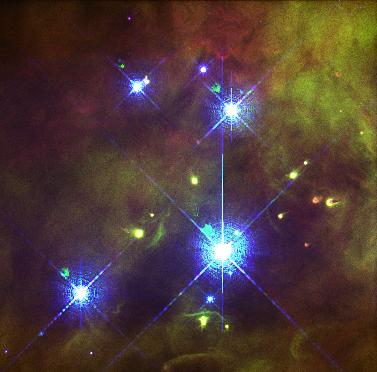
Which one of the stars, you ask?
Notice those little glowing spots? Those are places where radiation from the O6 star’s radiation is pushing nearby dust outward. See how they’re all pointing towards one of the stars—the lower right in this image?
That’s your O6 star.
But…wait. What’s an O6 star?
“O6” is just its classification, and tells you that it’s an extremely hot star.

Here on the H-R (Hertzsprung-Russell) diagram, we can graph any possible type of star in the universe—and even some that aren’t “true” stars yet. I’ve discussed the H-R diagram before. All that’s important right now is the horizontal axis, where you can see the stellar classes listed out: O, B, A, F, G, K, and M, in that specific order from hottest to coolest.
You can see from this diagram that an O star is the hottest type, and even an O6 star—a particularly cool subclass of the O class—is much hotter than the majority of stars.
The O6 star in the Orion Nebula is the only one of its siblings hot enough to ionize the surrounding gases. It quite literally strips the gas atoms of their electrons, allowing the cloud to glow bright at certain visible wavelengths. And thus, we see a nebula.
Elsewhere in the nebula, a cluster of protostars visible only in the infrared pushes fingers of gas away. Some astronomers have called this image the “Hand of God.”
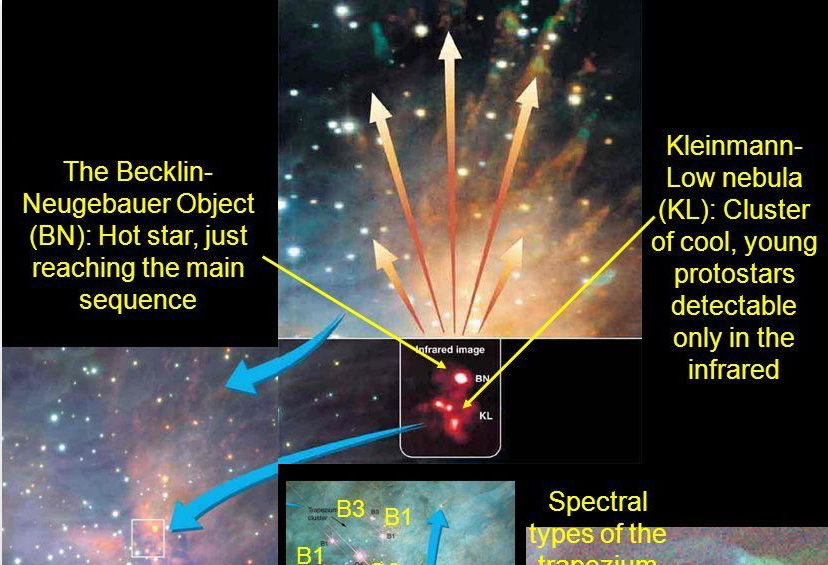
The radiation pushing these fingers of gas comes from two objects. One is a hot B star just reaching the main sequence, meaning that it’s a newborn star. The other is what’s called the Kleinmann-Low nebula, a cluster of cool, young protostars.
You can probably guess by now that there are tons of protostars in the Orion Nebula, just beginning to burn—and even more in the invisible dust clouds beyond it. And about 85% of these protostars are surrounded by disks of dust and gas.
So…what’s so important about that?
Well, in my last post, I explained how astronomers believe stars form: that they begin in cold, dense clouds and eventually collapse to form protostars. And what do you know, those protostars are believed to be surrounded by disks of gas and dust.
When theory matches with observation, astronomers can be relatively certain that their ideas are correct.
Earlier in this post, I briefly mentioned that winds from hot, young stars can compress the surrounding cloud and trigger new star formation. Next up, I’ll go into more detail about that.
Wow… I had no idea the Orion Nebula was even more mahoozive that I thought…
LikeLiked by 1 person
Beautiful images and great science that’s easy to understand. I love looking out at Orion, I think its appeal is that its so easy to spot and instantly recognisable. Pretty sure the first constellation we learn about as kids.
LikeLiked by 1 person
Orion is definitely one of my favorites! I don’t even remember the first constellation I learned, but I know the first one we were taught in my high school astronomy class was the Big Dipper. Which isn’t even a constellation, it’s an asterism. Glad to hear you enjoyed the post 🙂
LikeLike